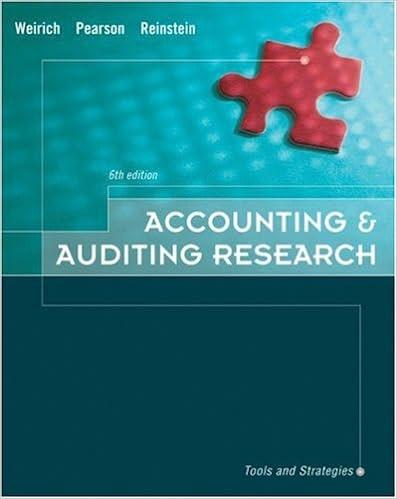Question
1. A company using regression analysis to correlate income to a variety of sales indicators found that the relationship between the number of sales managers
More sales managers should be hired. Imperfect negative correlation. Perfect inverse correlation. There is no correlation at all. |
To facilitate strategic positioning analysis. To facilitate target costing and life-cycle costing. To facilitate value-chain analysis. Accounting internal control. |
Correlation. t-value. R-Squared. Standard error. Multicollinearity. |
Fuel expense for a delivery truck; miles driven. Heating expense for a building; temperature to be maintained in the building. Product design cost; number of design elements. Sustainability cost in a manufacturing plant; machine-hours. None of the above is correct. |
Sales-value analysis. What-if analysis. Factor analysis. Cost analysis. |
Desired profit, expressed on an after-tax basis. Variable cost per unit. Total fixed costs. Product (or service) mix. Actual sales volume. |
Total fixed costs. Variable cost per unit. Desired (targeted) profit. Selling price per unit. Expected production level. |
Lower breakeven sales. Higher breakeven sales. Higher or lower breakeven sales, depending on batch size. A higher contribution margin per unit. A lower contribution margin per unit. |
Minimizing the amount of inventory held. Allowing a stable employment level. Meeting customers' changing expectations in terms of demand volume. Supporting the organization's move to JIT (just-in-time). Allowing the firm to compete successfully as a differentiator. |
Such plans encourage "gaming" behavior on the part of managers. Such plans strongly link managerial compensation to the agreed-upon budget. Under such plans, managerial reward is independent of budgetary targets. Under such plans, managerial reward is based principally on actual performance. Under such plans, managerial reward is based on what managers actually do, not what they do relative to what they say they can do. |
Production budget. Merchandise purchases budget. Accounts payable budget. Cash payments budget. Cost of goods sold budget. |
These budgets reflect continuous-improvement standards. These budgets adjust required resource demands based on targeted efficiency and productivity gains. This approach to budgeting can be used in conjunction with both traditional and activity-based budgeting. The approach can be used internally, but not for external purposes (e.g., in budgeting supplier costs). |
$65,000. $180,000. $230,000. $92,500. $185,000. |
$113,160. $101,400. $143,640. $125,640. $102,420. |
$5,095.10 $5,462.80 $5,661.90 $5,875.30 $5,966.40 |
Step by Step Solution
There are 3 Steps involved in it
Step: 1

Get Instant Access to Expert-Tailored Solutions
See step-by-step solutions with expert insights and AI powered tools for academic success
Step: 2

Step: 3

Ace Your Homework with AI
Get the answers you need in no time with our AI-driven, step-by-step assistance
Get Started


